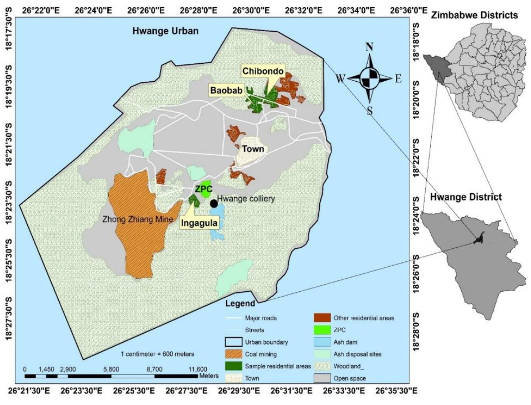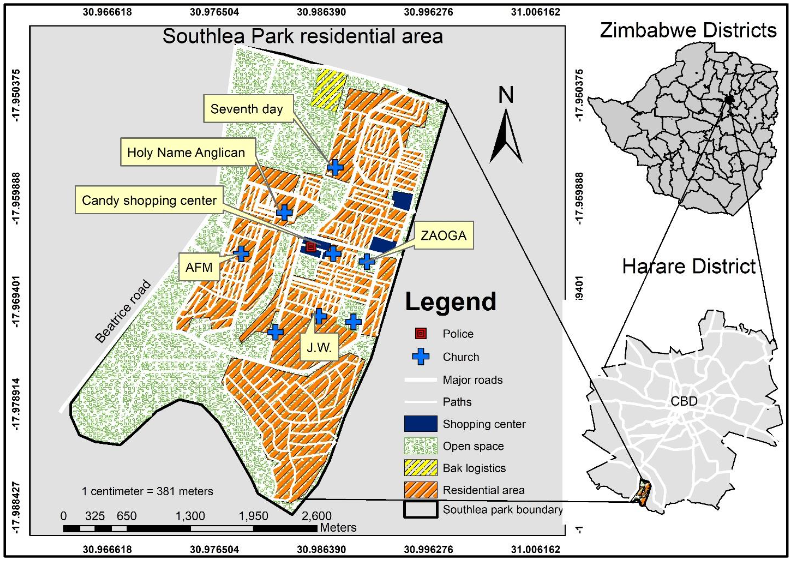Leisure class stratification among Chinese residents: Evidence from the CGSS
Abstract
Amidst rapid societal progression in China, leisure has become a crucial component of Chinese residents’ daily lives. However, the unequal distribution of social resources across social strata significantly affects their leisure patterns and practices. This study utilizes data from the Chinese General Social Survey (CGSS) spanning 2006, 2010, and 2017, analyzing the frequency and types of leisure engagement as dependent variables through mean, variance, and OLS regression analyses. The findings indicate considerable leisure stratification within Chinese society, both subjectively and objectively; there are significant differences in leisure participation frequency and type among different social strata, particularly in developed leisure activities. The conclusions of this study may aid in understanding the current state of leisure class stratification among Chinese residents, while its practical recommendations could help mitigate the issues of leisure stratification within Chinese society.
References
[1]Song R, Jin Z, Li W, Wu J. Leisure green book: China’s leisure development report 2019-2020. Social Sciences Academic Press; 2020.
[2]Luo H, Kang Y, Zeng X. “996” or “2.5”: Cross-country evidence on how leisure time affects economic growth. Journal of Tourism Studies. 2024; 39(1): 147-163. doi: 10.19765/j.cnki.1002-5006.2024.01.016
[3]Xing Z, Chen X. Study on the relationship between leisure, work importance, and residents’ happiness. Journal of Tourism Studies. 2024; 1: 1-15. doi: 10.19765/j.cnki.1002-5006.2024.00.00
[4]Liu D, Gao S, Song R. China leisure development report. Social Sciences Academic Press; 2015.
[5]Ma H. Lifestyles in social transition. JinYang Journal. 2013; (05): 36-43.
[6]Ni X, Gao K. Activating leisure time: review and prospects for research on leisure reshaping. Foreign Economics & Management. 2024; 1: 1-27. doi: 10.16538/j.cnki.fem.20231122.302
[7]Wei J, Wang Q. The impact of leisure time on employees’ work performance: A case study of Beijing. Beijing Social Sciences. 2022; 3: 34-44. doi: 10.13262/j.bjsshkxy.bjshkx.220304
[8]Wei X. Labor productivity and optimal holiday scheduling: Models, simulations, and empirical research. Research on Economics and Management. 2023; 44(11): 84-103. doi: 10.13502/j.cnki.issn1000-7636.2023.11.005
[9]Kleiber DA, Walker GJ, Mannell RC. A social psychology of leisure. Venture; 2011.
[10]Kelly JR. Leisure Identities and Interactions. Routledge; 2019. doi: 10.4324/9780429025846
[11]Lin X. Structural forms of family consumption stratification in China: A latent class analysis based on CFPS 2016. Shandong Social Sciences. 2020; 3: 48-58. doi: 10.14112/j.cnki.37-1053/c.2020.03.005
[12]Li Q. Ten Lectures on Social Stratification. Social Sciences Academic Press; 2011.
[13]Chen N, Tsai CTL. Rural-Urban Divide and the Social Stratification in Leisure Participation in China: Application of Multiple Hierarchy Stratification Perspective. Applied Research in Quality of Life. 2019; 15(5): 1535-1548. doi: 10.1007/s11482-019-09750-z
[14]Wang F, Zhang C. Urban residents’ class status and consumption preferences in China (2003-2013). Social Sciences. 2018; (4): 65-76. doi: 10.13644/j.cnki.cn31-1112.2018.04.007
[15]Lamont M, Beljean S, Clair M. What is missing? Cultural processes and causal pathways to inequality. Socio-Economic Review. 2014; 12(3): 573-608. doi: 10.1093/ser/mwu011
[16]Shaw BA, Liang J, Krause N, et al. Age Differences and Social Stratification in the Long-Term Trajectories of Leisure-Time Physical Activity. The Journals of Gerontology Series B: Psychological Sciences and Social Sciences. 2010; 65B(6): 756-766. doi: 10.1093/geronb/gbq073
[17]Rojek C. Leisure Theory. Palgrave Macmillan; 2005.
[18]Blackshaw T. Routledge Handbook of Leisure Studies. Routledge; 2015.
[19]Bowles D. Toward an Integrated Theory of Social Stratification. The American Journal of Economics and Sociology. 2012; 72(1): 32-58. doi: 10.1111/j.1536-7150.2012.00870.x
[20]Katz-Gerro T, Shavit Y. The Stratification of Leisure and Taste: Classes and Lifestyles in Israel. European Sociological Review. 1998; 14(4): 369-386. doi: 10.1093/oxfordjournals.esr.a018245
[21]Kegler MC, Gauthreaux N, Hermstad A, et al. Inequities in Physical Activity Environments and Leisure-Time Physical Activity in Rural Communities. Preventing Chronic Disease. 2022; 19. doi: 10.5888/pcd19.210417
[22]Jäckel M, Wollscheid S. Time is Money and Money Needs Time? A Secondary Analysis of Time-Budget Data in Germany. Journal of Leisure Research. 2007; 39(1): 86-108. doi: 10.1080/00222216.2007.11950099
[23]Linder SB. The Harried Leisure Classes. Columbia University; 1970.
[24]Spracklen K. Leisure, Sports & Society. Bloomsbury; 2017.
[25]Attanasio O, Hurst E, Pistaferri L. Evolution of Income, Consumption, and Leisure Inequality in the US 1980-2010. University of Chicago Press; 2014.
[26]Li C. Consumption stratification in contemporary Chinese society. Journal of Sun Yat-Sen University. 2007; 4: 8-13.
[27]Wang Y, Liu E, Xu L. Urban leisure: An investigation of time allocation among residents of Shanghai, Tianjin, and Harbin. Social Sciences Academic Press; 2003.
[28]Wang F. Family capital and parenting: Class differences in adolescent physical activity. Sports Science. 2019; 39(3): 48-57. doi: 10.16469/j.css.201903006
[29]Ma C. Cultural construction and class differences in sports leisure among post-80s professional women in Changsha. China Youth Study. 2016; 7: 92-97. doi: 10.19633/j.cnki.11-2579/d.2016.07.015
[30]Bu Y, Zhou W, Zhao G, et al. Study on social stratification and sports participation, preferences, and stratification in China. China Sports Science and Technology. 2015; 51(05): 78-93. doi: 10.16470/j.csst.201505013
[31]Qi L, Zhou S. Spatio-temporal characteristics of leisure behavior outside the home among different social classes in Guangzhou. Regional Research and Development. 2017; 36(05): 57-63.
[32]Zhou L. Leisure segmentation: Social stratification mechanisms and generational differences in leisure participation in China. Journal of Sichuan University of Science & Engineering. 2020; 35(06): 17-36.
[33]Xu W, Zhu J. Trends and factors in class-based sports participation. Sports Science Research. 2020; 34(1): 77-86. doi: 10.15877/j.cnki.nsic.20200305.001
[34]Zhang C, Zhao Z, Wang T. Private schools, school district housing premium, and spatial distribution of basic education resources. Economics Quarterly. 2022; 22(04): 1383-1404.
[35]Shi Y, Han Z. Study on residents’ leisure quality under time constraints: A micro analysis based on CTUS. Guizhou Social Sciences. 2023; 4: 123-131. doi: 10.13713/j.cnki.cssci.2023.04.021
[36]Wang W, Zhang Y. Has the digital economy alleviated cultural consumption inequality? Evidence from Chinese families. Social Science Front. 2023; 11: 86-96.
[37]Wang Q, Wei J. Study on inequality in residents’ leisure consumption: A case study of Beijing. Economic Theory and Business Management. 2019; 5: 103-112.
[38]Yan D, Luo C. Expenditure elasticity, consumption upgrading, and consumption inequality. Journal of Beijing Technology and Business University. 2023; 38(02): 100-113.
[39]Wang M, Zhou C. Capital and Segregation: A study on the stratification mechanisms of youth leisure participation in China. Journal of Jinan University. 2023; 33(2): 112-127. doi: 10.20004/j.cnki.ujn.2023.02.008.
[40]Wang F. Status Constraints and lifestyle transformation: Potential categories of healthy lifestyle among different social strata in China. Sociological Research. 2017; 32(6): 117-140.
[41]Ning Z, Zhao P & Luo Z. An Analysis of the Leisure Behaviors of Beijing Residents with Different Occupations under the Background of the Transformation of Social Developmen. Journal of Tourism Studies. 2009; 24(6): 46-52.
[42]Lu, X, Wu, Y. Sports leisure participation and international comparison of Shanghai’s middle class. Journal of Capital University of Physical Education and Sports. 2018; 30(1): 10-17.
[43]Liu J, Lai S, Zhang Y. Study on social stratification in youth sports exercise. Youth Studies. 2023; 5: 56-68.
[44]Li Z. Study on Leisure diversity stratification among youth groups. Journal of Hebei University. 2021; 46(2): 133-140.
[45]Yao H. Social stratification and leisure consumption in China. Open Journal of Business and Management. 2019; 8(1): 1.
[46]Xiao C. Culture Capital and Class Identification. Journal of Chinese Academy of Governance. 2016; (6): 59-64.
[47]Duan J. Cultural compartmentalisation and judgement of taste: Bourdieu’s theory of cultural compartmentalisation and its aesthetic critique. Social Science Journal. 2021; 6: 175-181.
[48]Cai Z. Social Capital, Family Education Aspiration and Class Mobility: Based on the Empirical Analysis and Thoughts on CFPS. Research in Educational Development. 2021; 41(20): 9-21.
[49]Yu H. How to Cultivate Successful People from Poor Families on the Breakthrough of Class Restrictions from the Cultural Capital Perspective. Journal of Higher Education. 2018; 39(02): 8-16.
[50]Pan H. Socio-economic status, intergenerational transmission effect and inequality reproduction: based on data from CGSS2011. Journal of Central South University (Social Sciences). 2015; 21(3): 152-157.
[51]Liu Y. An Analysis of the Problem of Father Involvement in Parenting in Family Education. Journal of Western. 2021; (19): 113-115.
Copyright (c) 2024 Weifei Li, Xuping Wang, Jianyun Zhu

This work is licensed under a Creative Commons Attribution 4.0 International License.
Authors contributing to this journal agree to publish their articles under the Creative Commons Attribution 4.0 International License, allowing third parties to share their work (copy, distribute, transmit) and to adapt it for any purpose, even commercially, under the condition that the authors are given credit. With this license, authors hold the copyright.










